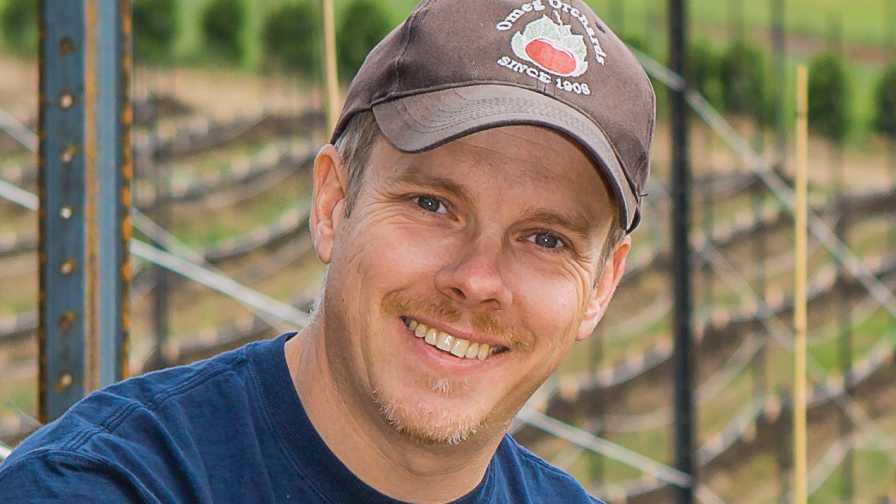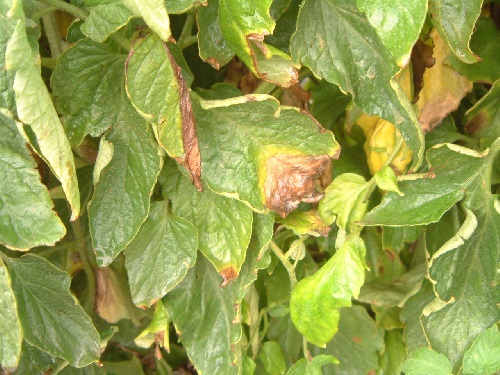How to Build a Plant Biostimulant Program From the Ground Up

Sweet cherry grower Mike Omeg of Omeg Family Orchards is seeing significant benefits from his soil management program, which includes using biostimulants.
There are any number of reasons to explore using biostimulants. Maybe you’re looking for healthier plants and a higher quality crop. Or perhaps you’re hoping for better efficiency with inputs that can help you manage your costs and take a more environmentally sustainable approach to production.
All of those elements were considerations for Oregon sweet cherry grower Mike Omeg, but in the end, the bottom line was pretty clear.
“The main reason is that I wanted to increase my income,” Omeg says. “I found myself in a situation where I was not as competitive with economies of scale, and I did not have vertical integration where I packed my own cherries. I really needed to explore areas to find ways to generate more revenue from my farming activities.”
Omeg, who is owner of Omeg Family Orchards, an affiliate of Orchard View, Inc. in The Dalles, OR, where he serves as Research and Development Manager, decided his best bet for bigger, firmer cherries and a more profitable crop was to take a look at his soils.
“I found it harder and harder to find ways that we could, say, prune our cherries differently, or put in variety and rootstock combinations and training systems. It’s kind of the old mentality that cherry growers have had for many generations: ‘We just need to redesign the orchard architecture and that is where we gain our efficiencies and our opportunities for profit,’” he says.
“We’ve become really good at farming the trees from the ground up. I realized the real opportunity for improvement was below the ground.”
Building a Biostimulants Program
The thinking went like this: a healthier soil microbiome creates a better growing environment for plants. That means more efficient use of soil nutrients by the plants, optimizing your chances for the best possible crop. Biostimulants were an important piece of the program Omeg eventually developed, but the goal of achieving better soils wasn’t as simple as just adding another product to his spray tank.
There are a lot of elements to consider in building a healthy environment for the soil microbes to be at their most effective, including compost, cover cropping, mulches (more traditional options like straw and wood chips or Omeg’s preferred method of mow-and-blow in orchard rows), and biostimulants applied through sprays or fertigation.
“Biostimulants speed up the biological and chemical processes that enhance our soil,” Omeg says. “The first step is providing food and shelter for those microbes, and that means covering your soil.”
He initially looked to composts.
“That’s where many people probably start. But what I found is that while compost does work, it is an industrial activity. It requires a lot of heavy equipment and a lot of diesel when you’re doing it on the scale that I needed to do with our acres. It just didn’t seem to match up very well,” he says.
Compost offers a few different things the microbiome needs. It provides food, shelter, and biology (microbes). Omeg says he focused on other solutions that provided some of the same benefits, but with less cost and effort.
“We found an activity that we already did anyway: mow and blow. Every orchardist mows his orchard rows. So instead of leaving that material in the alleyway, we blow it over to the side and into the tree row. That provides the microbes with a good environment. Mulches protect and feed the most important sec tion of our soils, from the duff to 4-inches deep. It’s something that was really fundamental to provide for enhancing the soil biology,” he says.
Next, Omeg focuses on populating the soil with microbes and feeding that soil biology with targeted nutrients.
“Once we build that shelter, then we need to make sure we populate that new shelter with microbes if we already don’t have them in the soil. When we put our mulch down, we apply banding sprays of biological products — microbes — through a herbicide boom so they can get in the mulch and start breaking it down. We also fertigate for nutrition, not just nitrogen, phosphorus, and potassium, but also humates, fish and seaweed products, that sort of thing.”
Finally, Omeg monitors the trees’ nutrition needs through sap analysis every other week and adjusts his fertigation and foliar spray programs based on those results.
“The best way to enhance your soil is to grow a healthy crop on it. The trees provide the soil biology with far more than we could ever dream of doing with the activities that I’ve been talking about,” he says. “The tree puts more energy, in the form of carbon, into the soil than we could possibly put on with compost, or mulches, or any of that sort of thing. So, if you provide the mineral nutrition it needs, the tree can allocate resources toward the rhizosphere through root exudates.”
Results and Measurement
Omeg says his focus is enhancing the soil to provide the tree with the nutrition it needs, not to stimulate the plant to have a defense response against pests. However, he believes he has found that by providing complete nutrition to the plants, they seem to have more resistance to diseases.
“I now have some anecdotal experience with bacterial canker and powdery mildew over time. As we’ve enhanced our soils and provided more complete nutrition through our sap analysis and measured nutrient applications, the plants have been able to overcome bacterial canker in our orchards,” he says. “Also, we’ve reduced the amount of traditional fungicides that we’ve applied for powdery mildew.”
But the jury’s still out on a direct correlation. “We need to see many years of scenarios and results, so we continue to use our pesticide programs,” Omeg says.
There are two more definitive measurement tools Omeg uses to gauge the success of his program: increased fruit size and firmness, and comparing program and control orchard blocks side by side.
By sampling cherries and running them through his own fruit quality lab, he is able to collect definitive data on fruit size and firmness, which are two primary qualities growers are paid on in cherries. He has been able to directly attribute larger, firmer fruit to the orchard blocks under the program.
He also performed three years of side-by-side block comparisons, with one orchard under his bio-intensive management program and the next under purely conventional management.
“We paired them up the best we could, looking at different timings and varieties, and then we reviewed the trends in our returns between each block and compared them. I saw the differences,” he says.
And those differences were often significant. In seasons where the market rewards you for a higher quality crop, a more intensive management program like this one can pay dividends. Big ones. Omeg estimates that in a good market year, the net return on his investment runs as high as $800 to $1200 per acre.
It’s not a foolproof solution, however. With an intensive management program like this, you’re all in from the start of the season as the costs are higher. If the market takes a turn and you’re not getting a premium for crop quality on certain specs, you’re already locked into those increased production and management costs.
“There are some hard-knock years. If the market’s not paying a premium for big cherries, your neighbor who’s doing things the traditional way is probably going to come out ahead on the bottom line,” Omeg says.
And it’s important to know what you’re getting into with management.
“When you’re working with biostimulants, there’s a lot more management intensity. Timeliness is of the essence with these activities. You have to manage your labor costs and your capital improvement. Logistics and workflow process are very important,” he says.
At the end of the day, however, Omeg says the overall results have been worth the effort.
“I’m usually hesitant to throw out ROI numbers because it’s difficult to convey the complexity of how you arrived at that number,” he says. “But as a general rule, you can have a very substantial return on your investment.”
Mike Omeg’s 5 Steps to Enhance Soil with Biostimulants
- Focus on food and shelter for soil microbes first
- Consider mulches, fish and other oceanics, humates, and blends
- Use targeted applications of biologicals
- Feed your soil biology all season long, not just before harvest
- Consider fertigation as your first choice for applying all of the above










